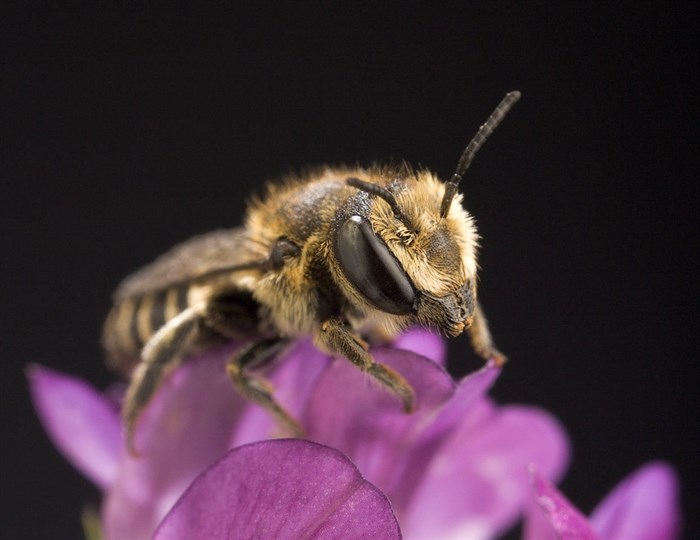
A photo of a leaf cutting bee shelter near Kenaston, Sask.
Image Credit: Mark Higgins - Backyard Pollinator
June 30, 2024 - 3:30 PM
People often wonder what those blue huts in farmers’ fields in North Okanagan are for. Those huts usually house an often overlooked alfalfa leafcutting bee.
Wayne Goerzen is a bee expert from Saskatchewan who has studied the alfalfa leafcutting bee for decades. He said people continue to explore uses for this species that is relatively new to Canada.
The alfalfa leaf cutting bee is typically used for, you guessed it, pollinating alfalfa. The bees are most commonly used in the prairies for alfalfa seed production but they are efficient pollinators for various other crops like blueberries and canola.
When people think of bees the most popular varieties of colony bees come to mind like honey bees and bumblebees.
“Ninety-nine per cent of these species are solitary bees, like the alfalfa leaf cutting bee, where each female does her own work," Goerzen said.
READ MORE: Why we really need you to sign up to our newsletter
Alfalfa leafcutting bees get their name from the fact they cut leaves into little pieces and build tunnels out of those pieces, and then fill the tunnels with nectar and pollen to lay their eggs.
Field shelters — the blue huts — for alfalfa bees can hold about 3,000 of the leaf tunnels.

A close-up of an alfalfa leafcutting bee.
Image Credit: Wikipedia
Goerzen said some farmers in B.C. use the bees for alfalfa, and some are experimenting with other crops leafcutting bees could be suited for.
“I think there's always an interest in looking at what other kinds of crops might our alfalfa leafcutting bees pollinate?” he said.
Leafcutting bees have a shorter range than honey bees so they focus their pollination in the field where they’re housed. He said solitary bees and colony bees have complementary pollinating methods so when one area has both types of species the plants do especially well.
There are other species of solitary bee which could be useful for crops typically grown in the Okanagan like tree fruit.
“There's one called the blue orchard bee, which as its name suggests has potential,” he said.
READ MORE: iN VIDEO: Honey bee swarm rescued on Okanagan Rail Trail in Kelowna
The blue orchard bee is common in the southern Interior but isn’t widely used for agricultural pollination yet since they are more difficult to manage than alfalfa leafcutting bees.
“There are people working on that,” Goerzen said. “Certainly there have been researchers who have spent time figuring them out.”
The alfalfa leafcutting bee is originally from the Mediterranean. The species came to North America less than a hundred years ago, and Canadian farmers have found them useful.
“After World War II, when large amounts of war material were being shipped back to both coasts of the United States, what happened was there were holes or tunnels within the wood that things were being crated in and some of these bees got over,” Goerzen said.
Invasive species are top of mind when the topic of introducing foreign species arises, but the alfalfa leafcutting bee is an example of a species that found a new home in Canada.
Click here to learn more about bees and Goerzen’s research.
To contact a reporter for this story, email Jesse Tomas or call 250-488-3065 or email the editor. You can also submit photos, videos or news tips to the newsroom and be entered to win a monthly prize draw.
We welcome your comments and opinions on our stories but play nice. We won't censor or delete comments unless they contain off-topic statements or links, unnecessary vulgarity, false facts, spam or obviously fake profiles. If you have any concerns about what you see in comments, email the editor in the link above. SUBSCRIBE to our awesome newsletter here.
News from © iNFOnews, 2024